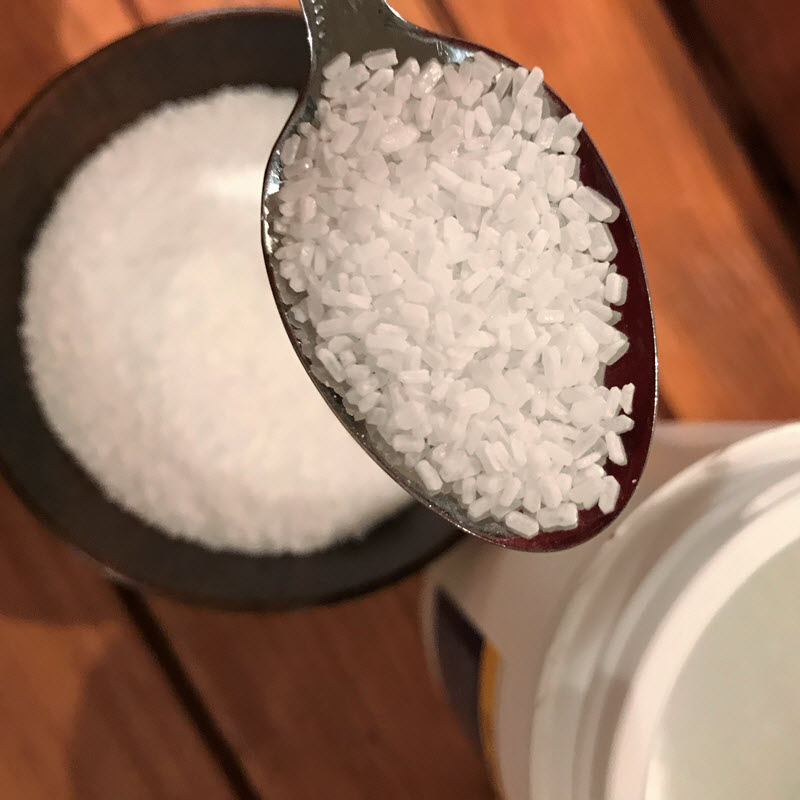Seven additives you don’t need to worry about

If you are serious about a healthy diet then you probably check your food labels for additives. As a rule, acidity regulators, emulsifiers, gums, thickening agents and natural colours are mostly harmless and on my OK list. Here are seven additives that are harmless or even good for you. Surprised?
Seven ‘good’ additives
In my eBook – The Handy Foodwatch Guide to Food Additives - I’ve listed 28 additives that are harmless and don’t pose any problems. In fact, you are more than likely already consuming them in natural fare or as supplements or pharmaceuticals. (However, if you find you are allergic to any, you’ll know what to look for and to avoid them.) Anyway, here are seven that I’m talking about:
1. Beet red (162)
Also known as Beetroot red, Betanin or Betanine, Beet red is a purple–red food colour extracted from everyday beetroot (Beta vulgaris). Yep, the same one you cook up for that glorious beetroot, walnut and spinach salad.
Where you’ll find it
Natural confectionery; desserts, berry ice-cream, sorbet; jams, jellies; sauces.
2. Acetic acid (260)
Acetic acid is an organic acid that gives vinegar its sour taste and distinct smell. Small quantities are added to foods to give a sour taste and correct the flavour balance. There’s nothing sinister about acetic acid!
Where you’ll find it
Pickled vegetables, chutneys; vinegar; ice-cream; cheese; cereal or muesli bars; sauces.
3. Citric acid (330)
Citric acid gives food a sharp or sour taste, which produces a pleasing tart flavour, balances out any sweetness and helps maintain a constant acid level in food.
It is sometimes used to prevent oxidation such as browning or deterioration.
 It occurs naturally as the acid of lemons, limes and other citrus fruit; the citric acid added to canned tomatoes is the SAME.
It occurs naturally as the acid of lemons, limes and other citrus fruit; the citric acid added to canned tomatoes is the SAME.
You can readily buy citric acid as white crystals or granules at supermarkets and pharmacies.
It’s sold as a lemon juice substitute, flavouring agent or natural cleaning aid. It adds an extra sharp flavour to lemon cordial and all sorts of beverages.
Where you’ll find it
Soft drinks, iced teas, juices and other beverages; jellies, lemon-flavoured puddings and desserts; jams, confectionery; canned foods; processed meat products.
4. Lecithin (322)
Lecithin, a natural substance found in soy and egg yolks, is used as an emulsifier. It works to keep all ingredients blended and avoid any ‘weeping’ - you wouldn’t be happy to see your jar of mustard separate into a layer of oil and a layer of the rest, would you? However, if the lecithin is derived from soy then those with soy allergies should avoid it.
Where you’ll find it
Margarine; mustards; soups and sauces; chocolate and packet cake mixes.
5. Pectin (440)
Pectin is a naturally occurring carbohydrate found in fruits and vegetables that is responsible for cell structure. Pectin is available commercially in powdered and liquid forms. I’ve used commercial pectin myself (brand name Jam Setta) to help my jams and marmalades set. And have been very grateful as usually my ‘jams’ end up as runny sauces.
Where you’ll find it
Jams, fruit spread, marmalade; jellies; ice-cream; fruity yoghurts; jelly confectionery; fruit drinks.
6. Magnesium sulphate (518)
Also known as Epsom salt, magnesium sulphate is used as a mineral salt and firming agent by the food industry. You can buy it readily at pharmacies, supermarkets and gardening stores as white or colourless crystals, or a granular white powder.
 It occurs naturally in sea water and is a common and economical source of soluble magnesium. Taken orally, it’s an effective natural laxative.
It occurs naturally in sea water and is a common and economical source of soluble magnesium. Taken orally, it’s an effective natural laxative.
Where you’ll find it
You’re already ingesting magnesium and sulphate from foods or supplements. Magnesium is widely distributed in foods but rich sources are milk, whole grains, parsley, spinach and other green vegetables, meats, nuts and bananas.
7. Bromelain (1101)
Bromelain is a protease enzyme (meaning it breaks down proteins) found naturally in fresh pineapple. Thanks to this natural enzyme, fresh pineapple is well known as an ingredient in a meat marinade, as it can tenderise and soften tough meat before a barbecue. Similar enzymes that break down proteins are found in fresh figs (ficin) and paw-paw or papaya (papain).
Where you’ll find it
Marinades and sauces.
4 other additives that don’t set off alarm bells
- Tartaric acid 334 food acid
- Ascorbic acid 300 and sodium ascorbate 301 antioxidant
- Xanthan gum 415 gelling agent
- Beta-carotene 160a natural orange colour
Navigate a middle course to make nutritious, meals, with maximum convenience & minimum additives.
Want to know more?
Then grab a copy of The handy Foodwatch Guide to Food Additives here. It’ll help you navigate a middle course so you can provide nutritious, healthy meals for yourself and those you love, with maximum convenience and minimum additives.



